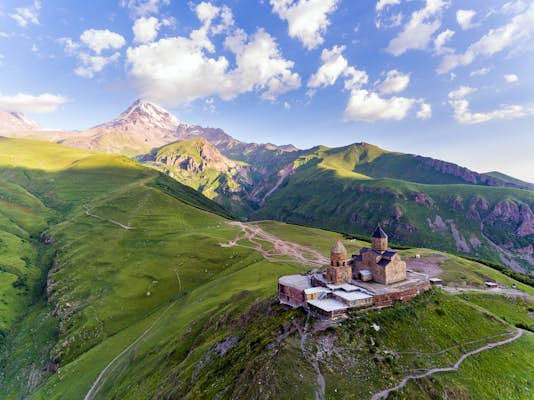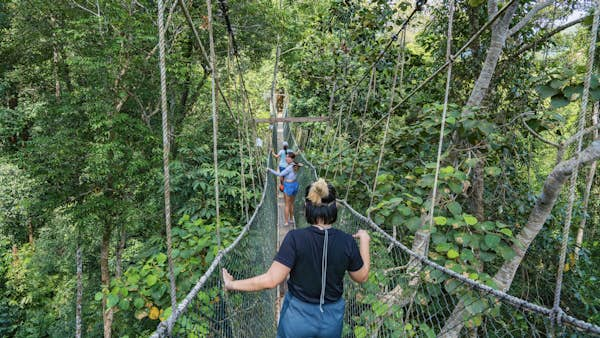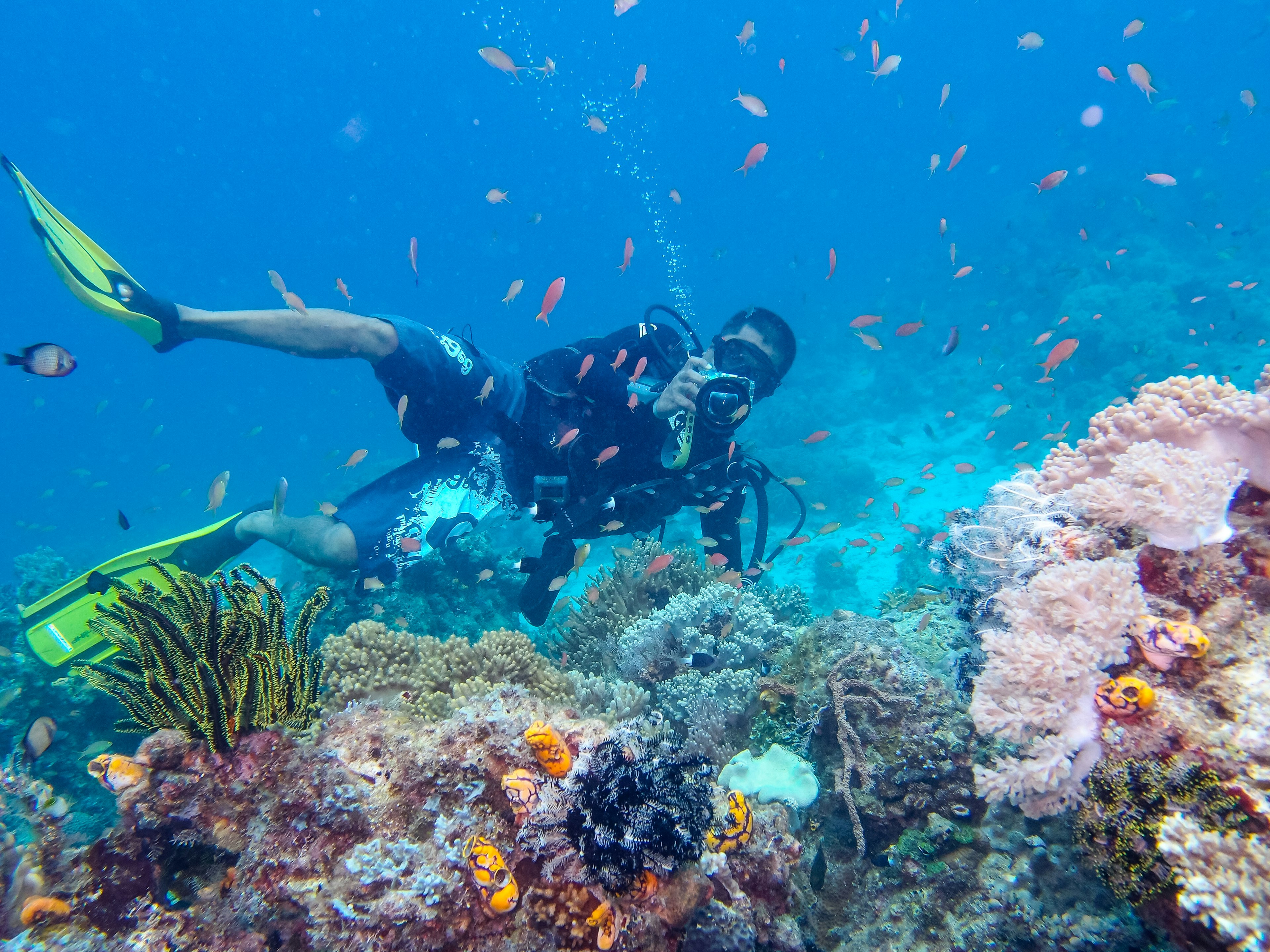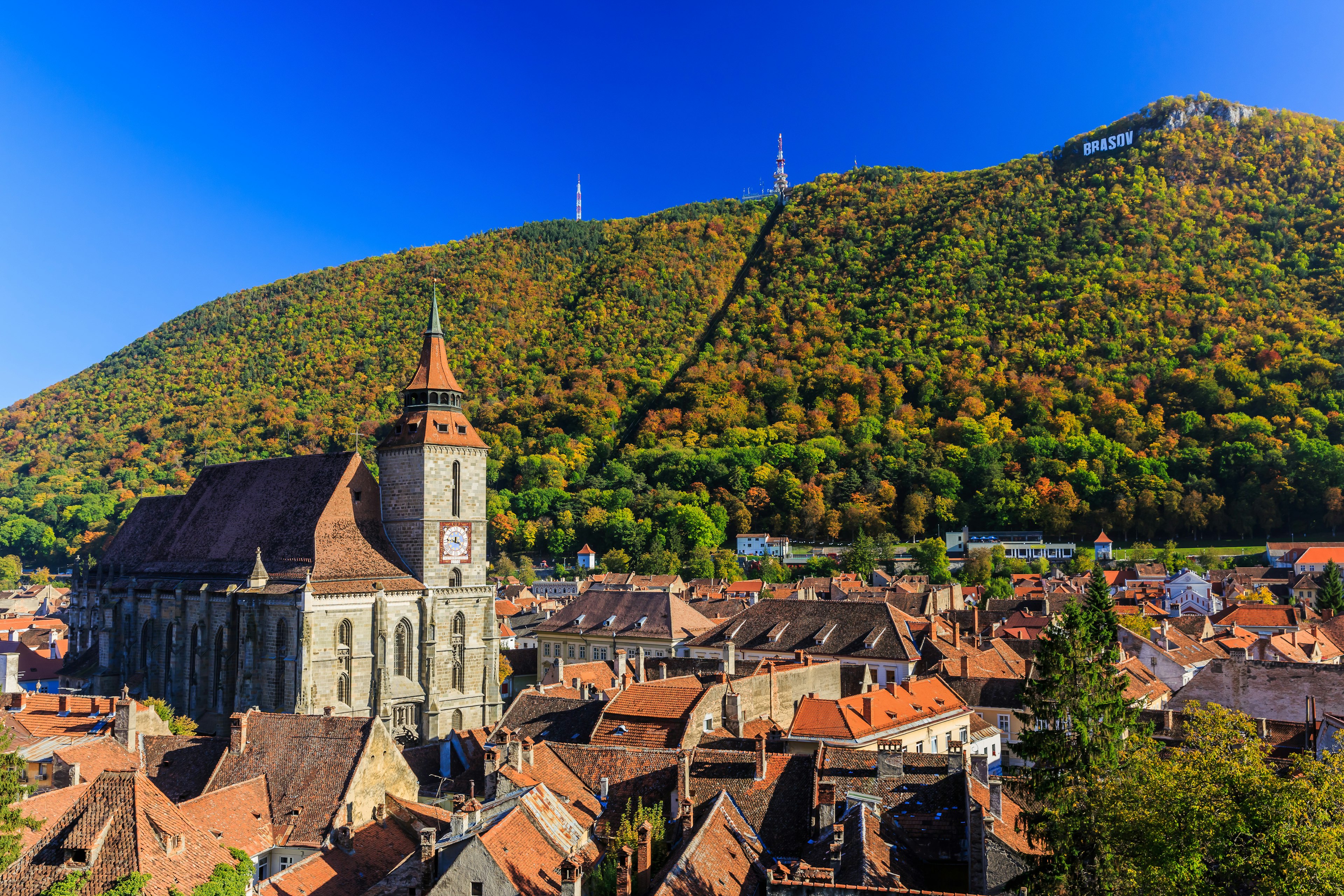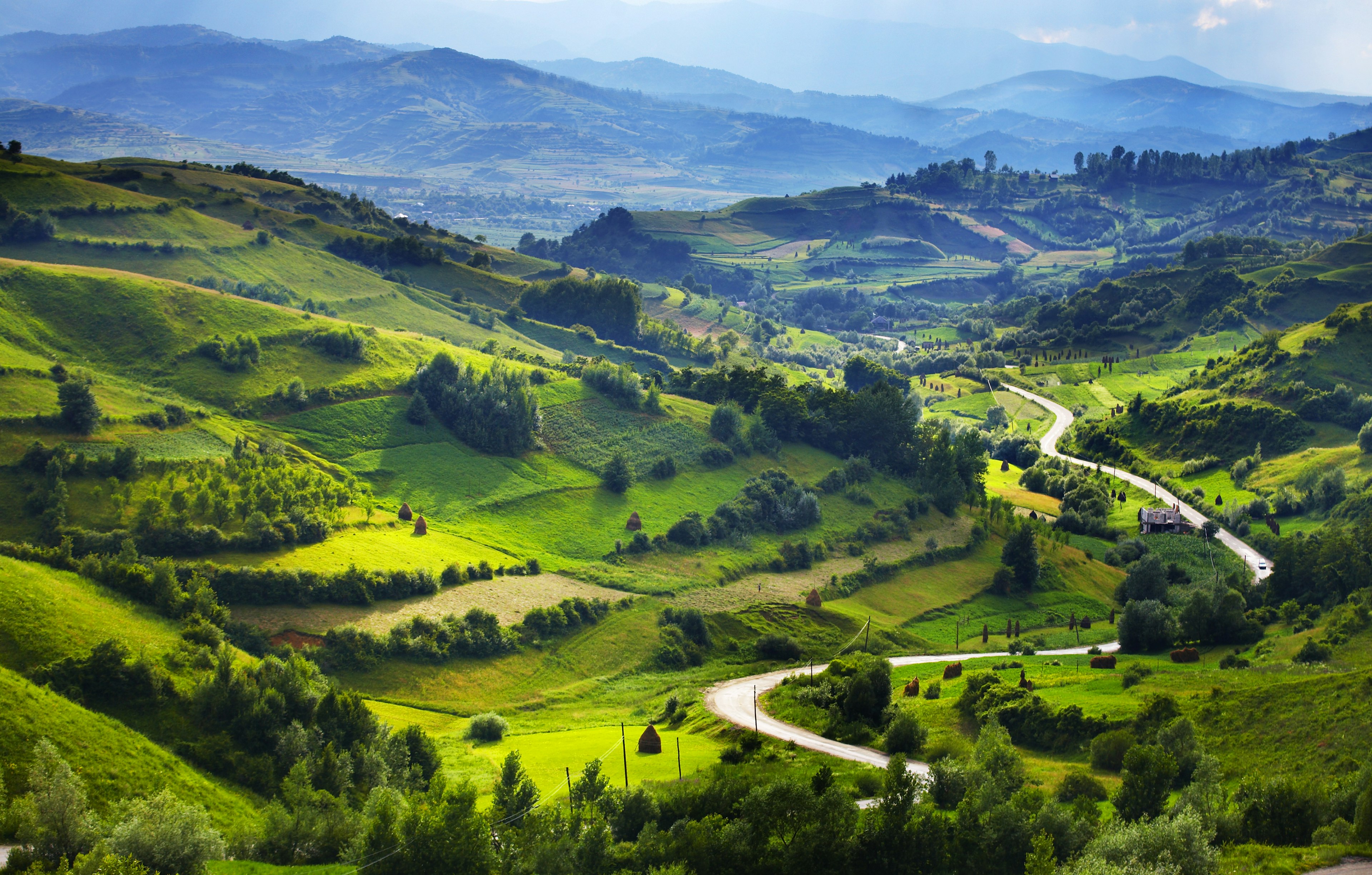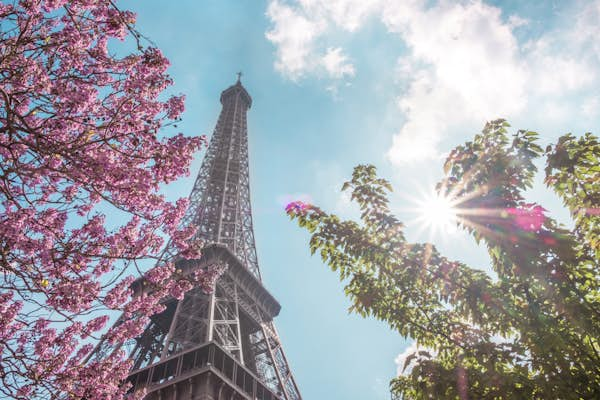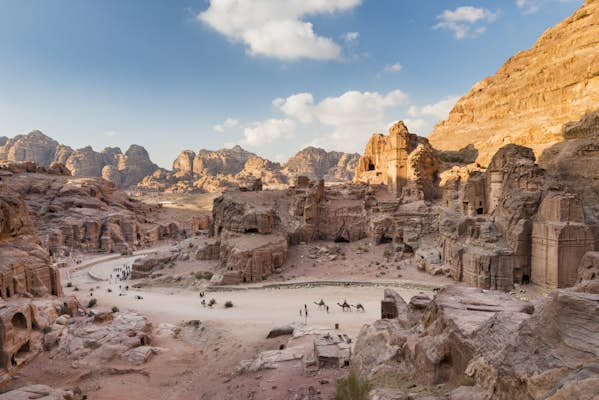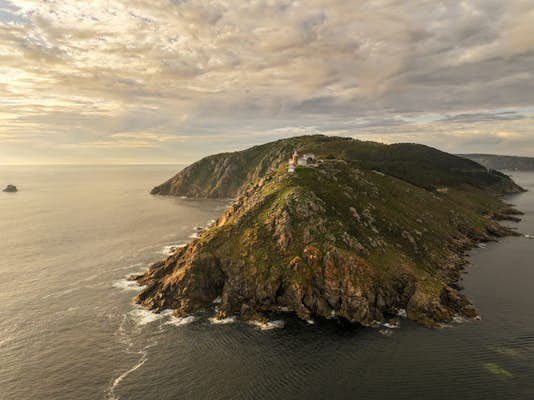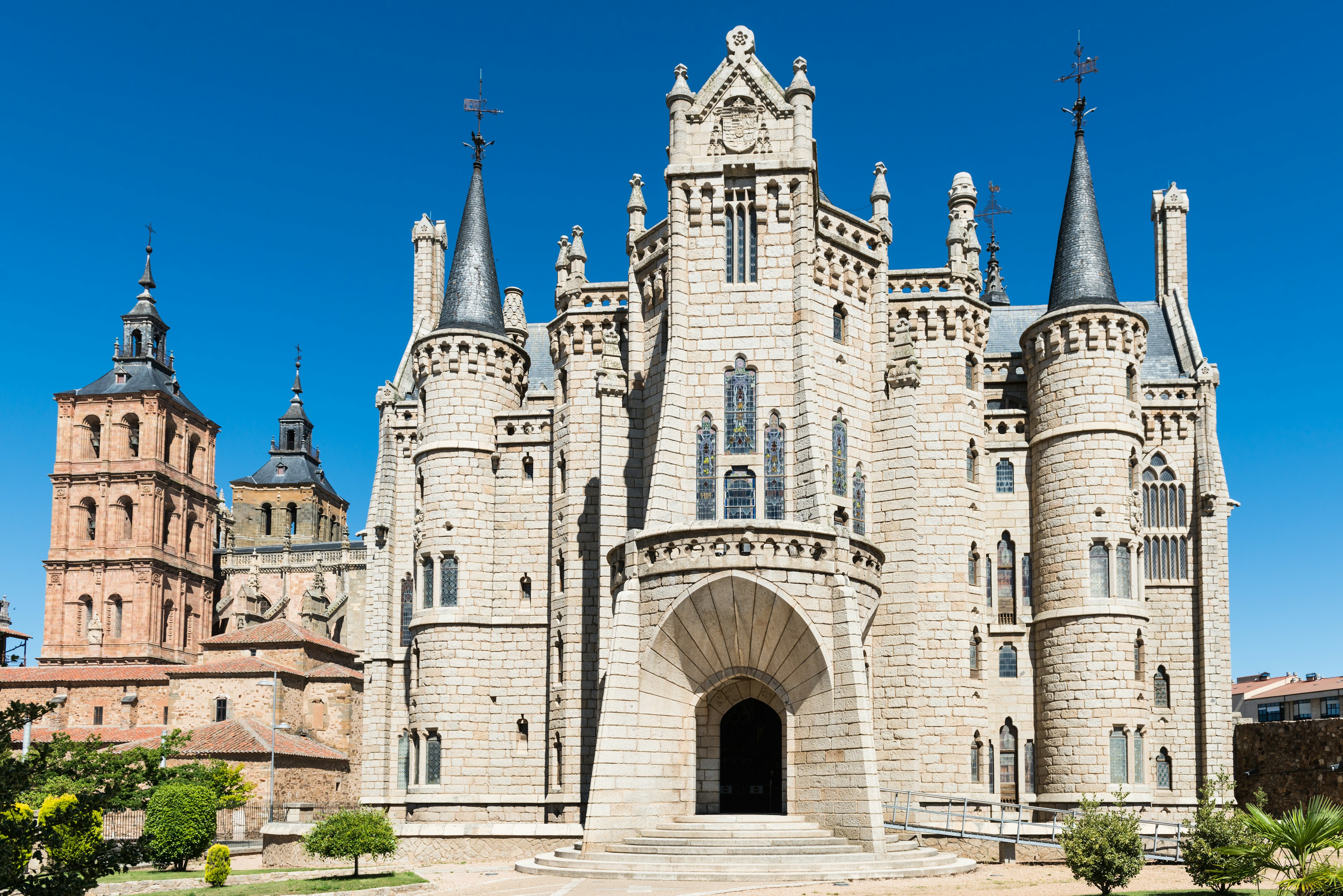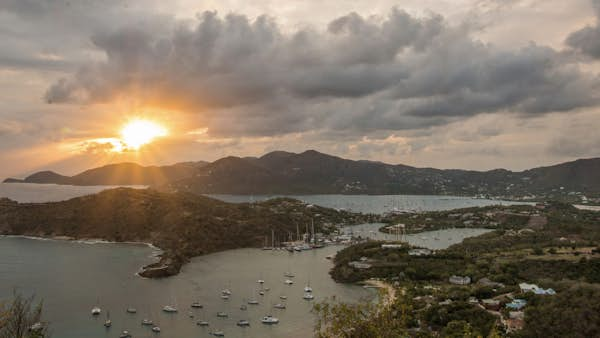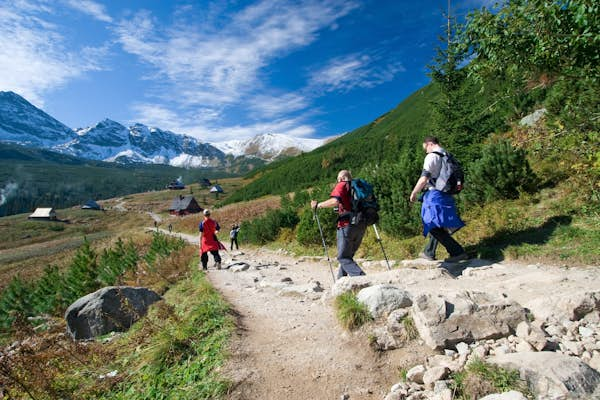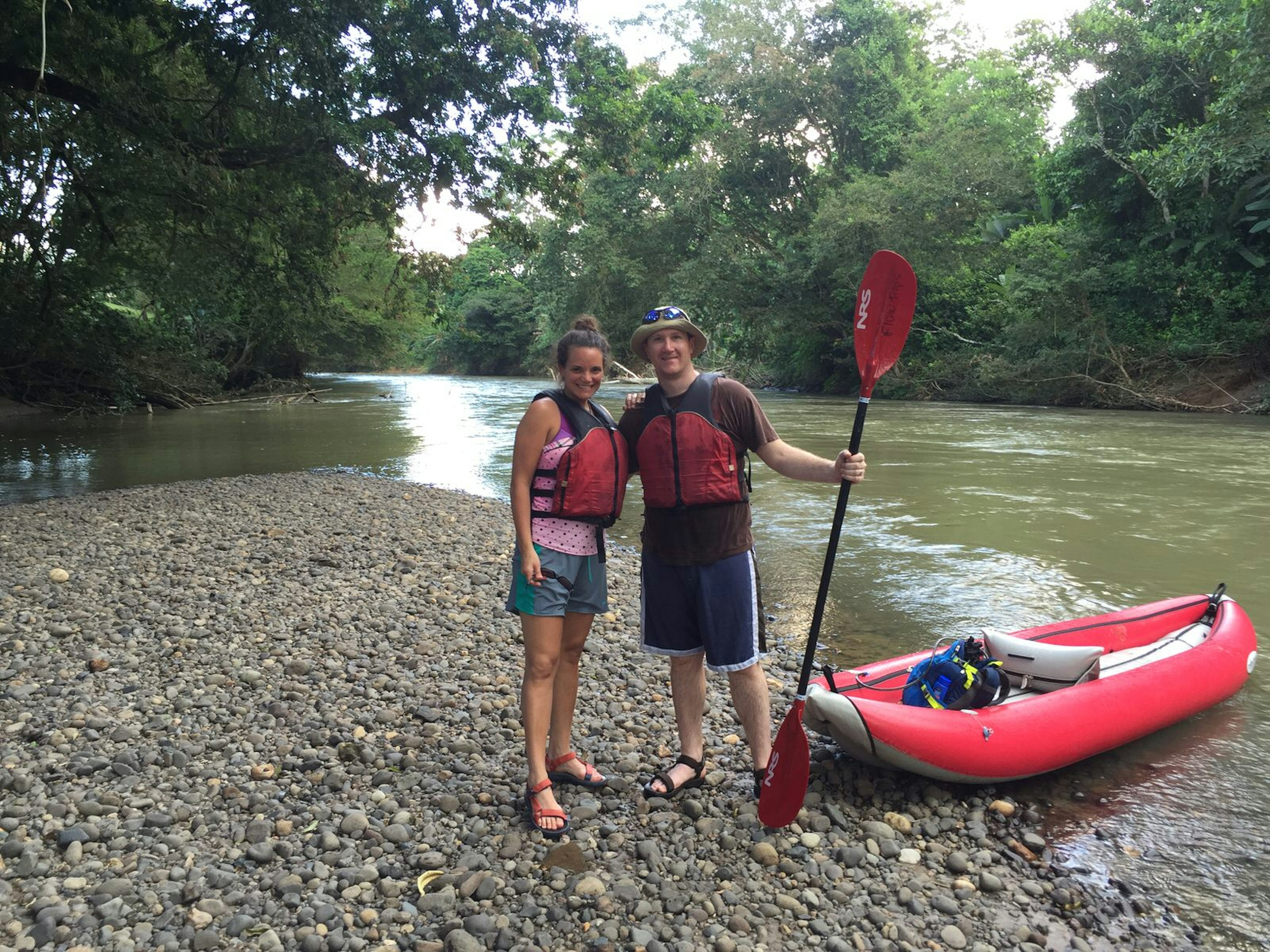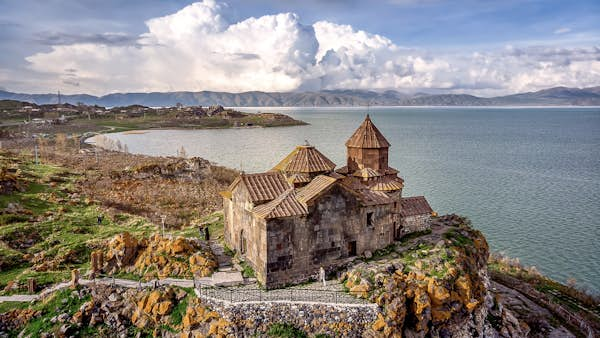Where Europe and Asia grind up against each other, magical Georgia sits on the southern slope of the Great Caucasus mountain range, whose snowcapped peaks run from the Black Sea to the Caspian.
Though relatively small in terms of area, Georgia offers a huge variety of scenery and activities, and its mountainous landscape and limited transport infrastructure combine to make getting about more time-consuming than you might imagine. While there’s no need to limit yourself to just one region, you’re best off deciding what kind of trip you want to have, and then choosing a few parts of the country to focus on.
To help you do that, here are some of the very best places to consider including in any itinerary.
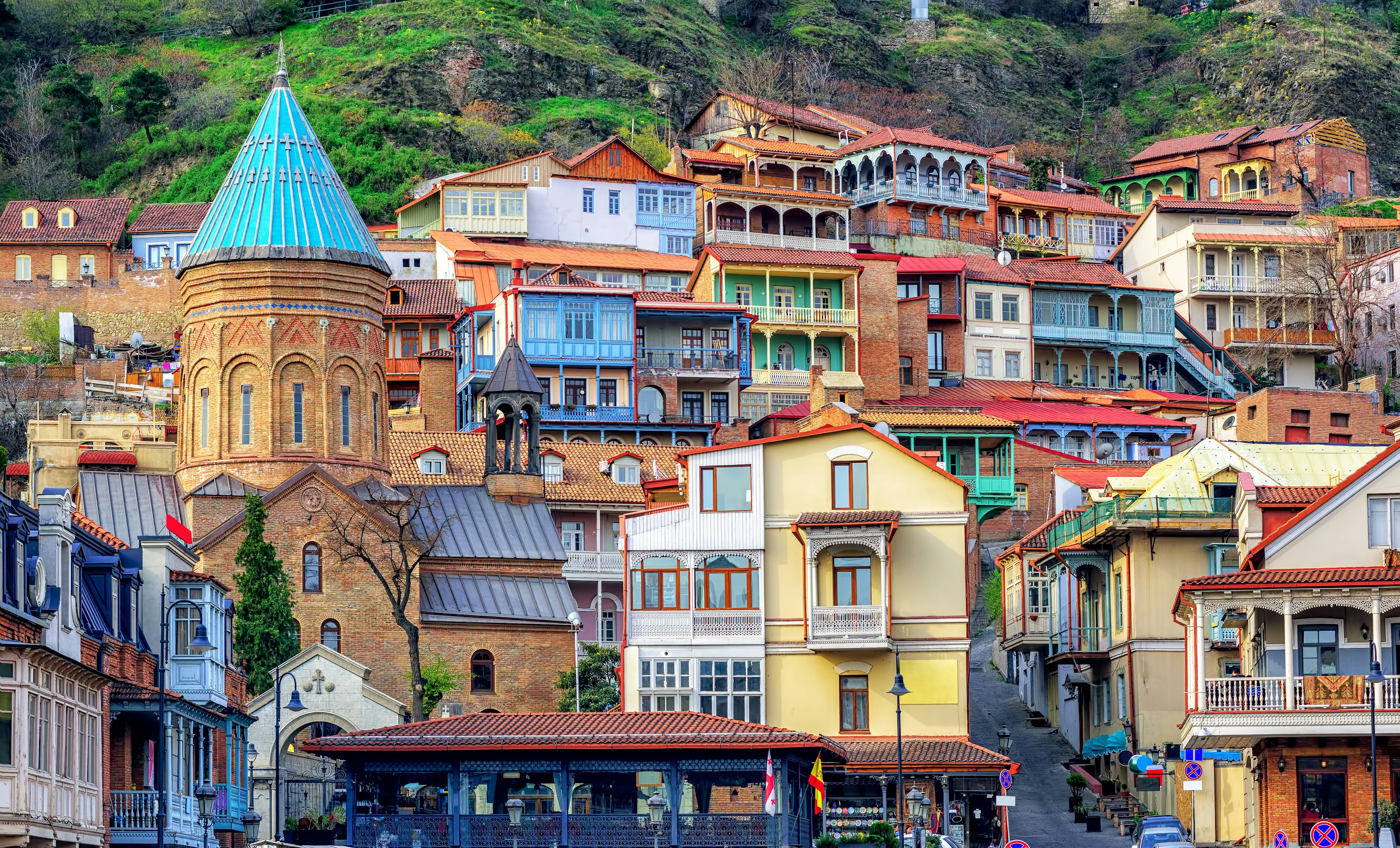
1. Tbilisi
Best place for urban pursuits
Quickly beguiling anyone who visits, the Georgian capital offers up a fascinating Old Town, a wealth of avant-garde Soviet architecture, traditional sulfur baths, and an extraordinary array of medieval churches. Spread out along the narrow valley of the Mtkvari River, Tbilisi is the kind of place you have to get up high to really appreciate – try taking the cable car to the Sololaki ridge where you’ll find the Narikala Fortress and iconic Mother Georgia (aka Kartlis Deda). You can also take the funicular to the city’s highest point, Mtatsminda, where, on top of stellar city views, you also get a campy fairground and a huge Ferris wheel.
Tbilisi is also the best place in Georgia to eat out, drink wine and go partying, with dozens of innovative menus available at establishments such as Barbarestan, Azarphesha, Alubali and Keto & Kote. This is also one of the best places in the country to sample a range of Georgia’s famous wines and take part in its thumping nightlife. Tbilisi offers you plenty to keep you entertained for days, but can also serve as a base from which to do day trips to various other parts of central Georgia.
Planning tip: Book at least a week ahead for the best Tbilisi restaurants in the summer months.

2. Batumi
Best city on the Black Sea
Batumi, Georgia’s second city, is the subtropical yin to Tbilisi’s yang, with its beachfront location, charming Old Town, seemingly endless seaside esplanade and an ever-growing number of glitzy skyscrapers – Georgia’s answer to Dubai, locals will tell you with a grin.
The city is built for pleasure, and functions as Georgia’s unofficial temporary capital during the height of summer, when most of Tbilisi’s locals decamp en masse to the Black Sea’s beaches for sunshine, cocktails and partying on the seafront. Georgia’s best beaches can be found to the south of the city, between Batumi and the Turkish border. Inland, the autonomous Adjaran region offers wonderful rafting and hiking, as well as the famously rickety cable car in Khulo.
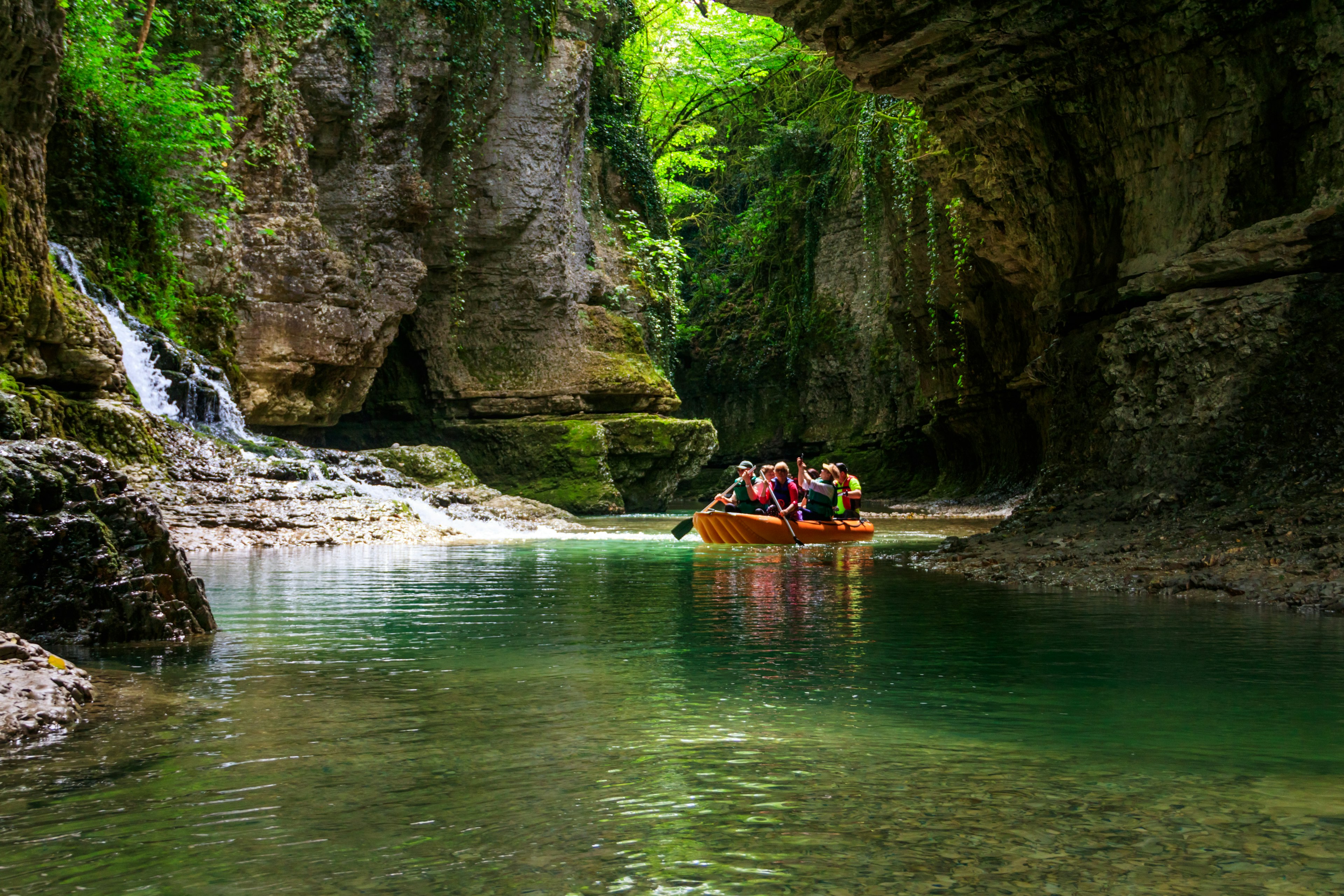
3. Kutaisi
Best base for exploring nature
Sleepy Kutaisi has found itself relegated to Georgia’s third-largest city in recent years as coastal Batumi booms. But this ancient town, which may once have been home to the golden fleece of Greek legend, has nonetheless managed to establish itself as the center of Georgia’s burgeoning tourist industry.
The nearby David the Builder Airport brings dozens of low-cost airline flights to Kutaisi from all over Europe each week, and there are dozens of hostels and a competitive short-term apartment rental market. Not only is Kutaisi bang in the center of the country (making it a more obvious base than either Tbilisi or Batumi), but it’s also surrounded by a wealth of sights, natural wonders and diverse attractions including the Martvili Canyon, Okatse Canyon, the Gelati Monastery and two astonishing relics of communism, the towns of Tskaltubo and Chiatura.

4. Stepantsminda
Best for easy access to the High Caucasus
The extraordinary Georgian Military Highway takes you to the town of Stepantsminda (still commonly referred to by its Soviet-era name, Kazbegi), on the border with northern neighbor Russia. Though the epic journey here has lost some of its charm in recent years (it’s become a busy truck route for imports to Russia), there is no denying the incredible setting of the town, not least the iconic silhouette of the hilltop church Tsminda Sameba against the glacier of Mt Kazbek. It’s truly a sight that never ceases to amaze, despite its reproduction on a million postcards.
Planning tip: Head to Tsminda Sameba Church first thing in the morning or late in the afternoon when the light is better, and – crucially – when you’ll not have to share this magical spot with the crowds.
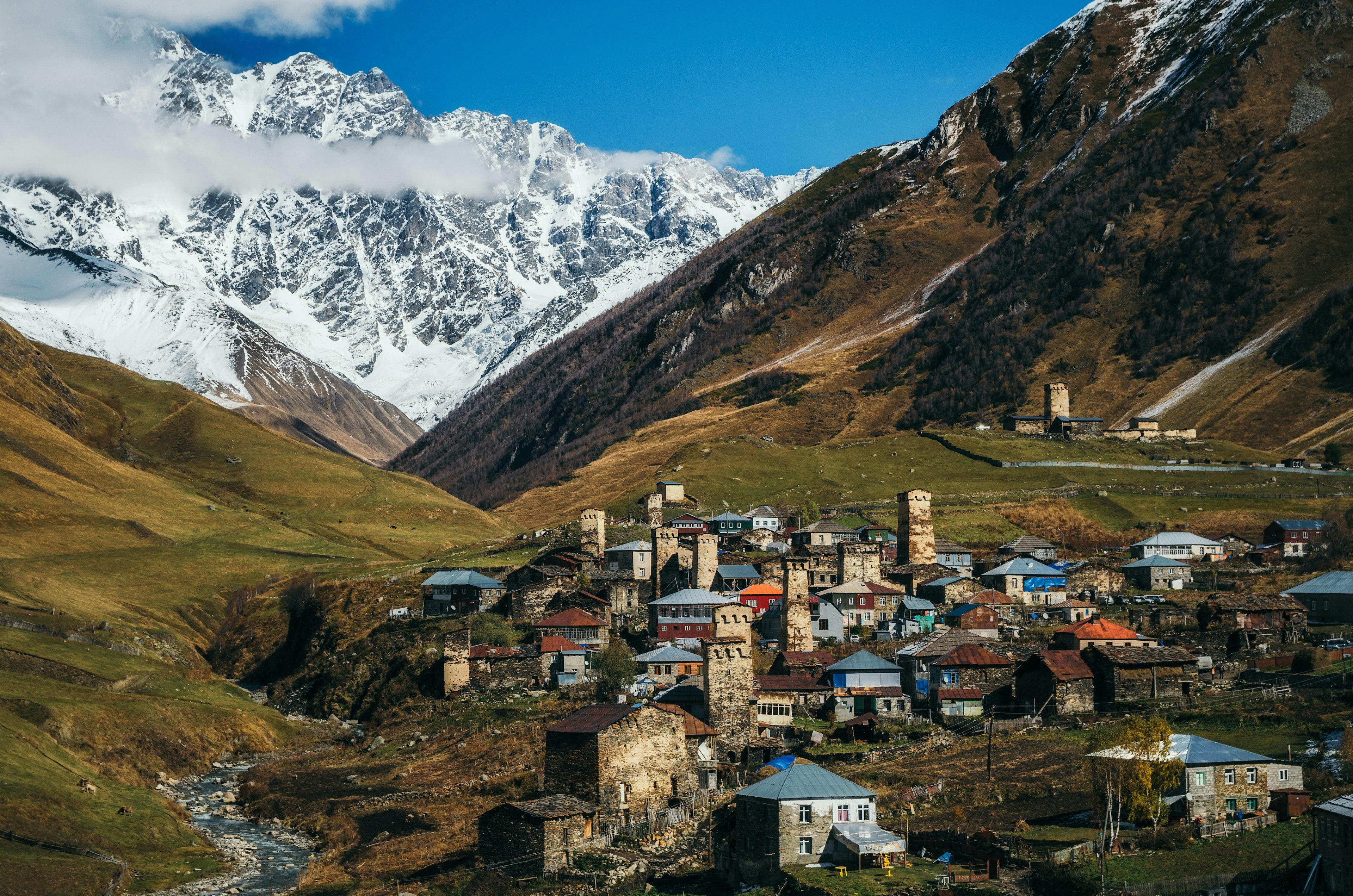
5. Svaneti
Best mountain scenery
Georgia’s mountains are extraordinary and jaw-dropping wherever you encounter them. But if you want to see the best scenery in the country, there’s nowhere that can compete with the ancient and mysterious region of Svaneti. As well as Georgia’s highest peak, Shkhara (5068m; 16,627ft), which towers over the wonderful highland village of Ushguli, there is almost limitless potential for hiking here, not least the now well-known Mestia to Ushguli four-day hike, which allows you to sleep each night in a different village.
Planning tip: You can skip the taxing eight-hour drive to Svaneti from Tbilisi and get there in under an hour by taking one of the affordable daily flights to Mestia with Vanilla Sky.
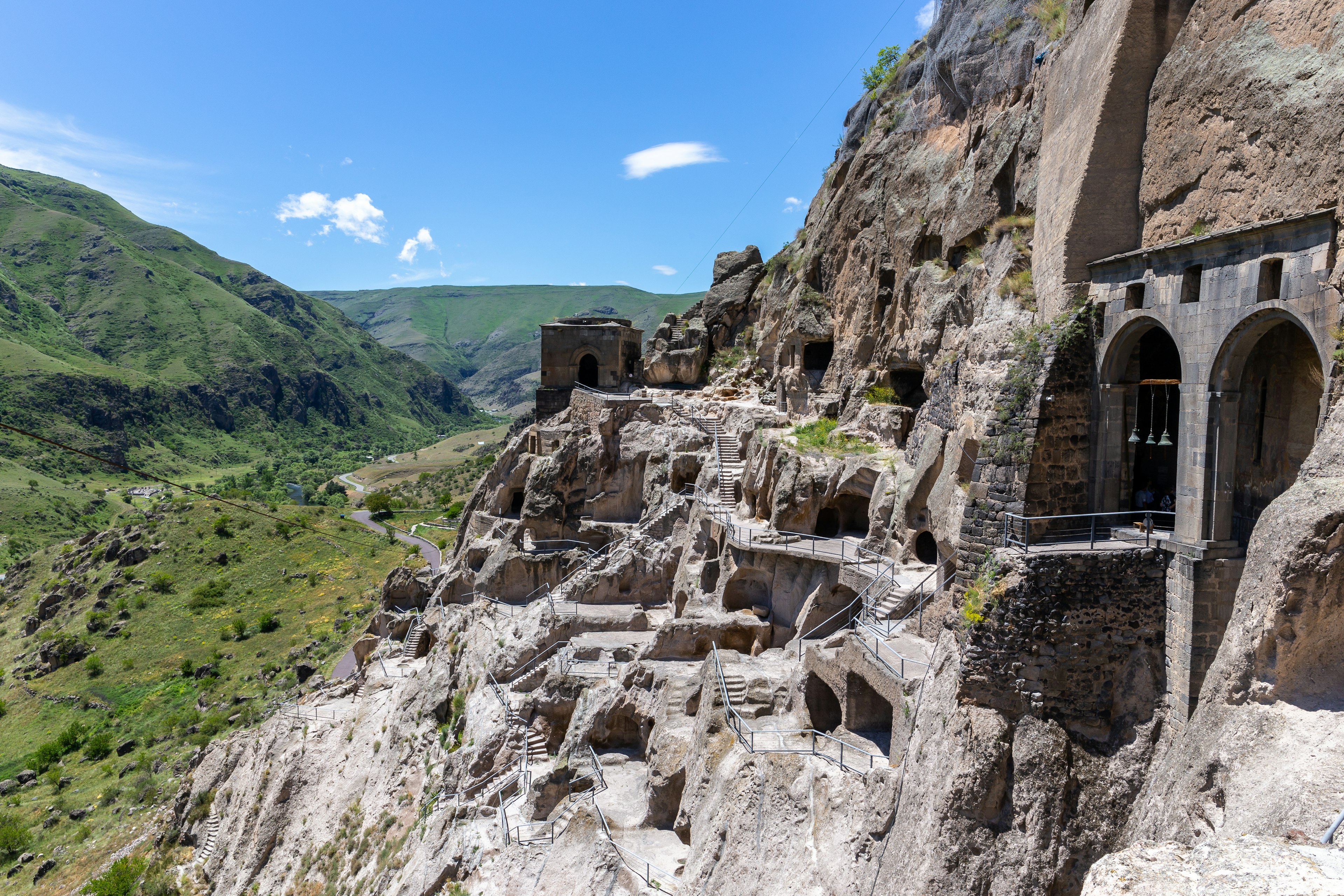
6. Vardzia
Best monastery
In a country with more than its fair share of staggering monasteries and churches in perilously remote places, Vardzia is unquestionably the most magnificent of the lot. Its 13 floors are hewn into a cliffside and boast no fewer than 13 churches among its 400-plus rooms. The monastery’s jaw-dropping setting in a dramatic river valley makes it a real showstopper, and the undulating drive to get here from Akhaltsikhe is a wonderful treat to boot.

7. Sighnaghi
Best place to enjoy Georgian wine
There’s magic in the air in Sighnaghi, and that’s not just down to its high altitude and the vertiginous views it affords into the vast valley below. This hilltop delight has more than a hint of Tuscany about it, with its terracotta roofs, cobbled streets and enviably slow pace of life.
Take a walk along the incredibly well-preserved city walls and visit the town museum, which has one of the best collections of paintings by Georgia’s most famous artist, Niko Pirosmani. Then settle in at one of Sighnaghi’s many wine bars to sample the result of the grape harvest in the country’s premier wine-producing region.
Planning tip: Call ahead to enjoy a delicious, organic lunch at the Lost Ridge Inn, just a few kilometers outside Sighnaghi.

8. Mtskheta
Best place for a spiritual experience
So close to Tbilisi that the sprawling capital’s suburbs threaten to engulf it, Mtskheta enjoys a magical setting at the picturesque confluence of two rivers. It was also the location of one of Georgia’s most important historical events – its conversion to Christianity at the hands of St Nino in the 4th century. That vital event, which still forms a huge part of Georgian national identity, is memorialized in the Jvari Church, Georgia’s holy of holies, which commands terrific views over the town from its soaring hilltop location. Meanwhile, down in the town itself is the stunning 11th-century Svetiskhoveli Cathedral, an architectural gem of Georgia’s early Golden Age.
Planning tip: You only need a couple of hours to see Mtskheta, and its location just northwest of Tbilisi makes it an obvious pit stop on any journey up to Stepantsminda or west towards Kutaisi.

9. Borjomi
Best spa town
There’s more than a little touch of the Russian empire about this glorious 19th-century spa town tucked away amid the thickly wooded hills of the Lesser Caucasus. Borjomi’s salty-sour mineral water is Georgia’s most famous export and is instantly familiar to almost anyone from the former Soviet Union. However, the elegant resort town that produces it is worth a visit even if you’ve never heard of its eponymous sulfurous water.
As well as visiting the sprawling Borjomi Central Park (once you get past the tacky rides and children’s entertainments it opens up into a gorgeous riverside walk that brings you to a trio of delightful thermal pools), you can use the town as an excellent base for hiking in the Borjomi-Kharagauli National Park, and take the small gauge railway line to the nearby alpine resort of Bakuriani.
